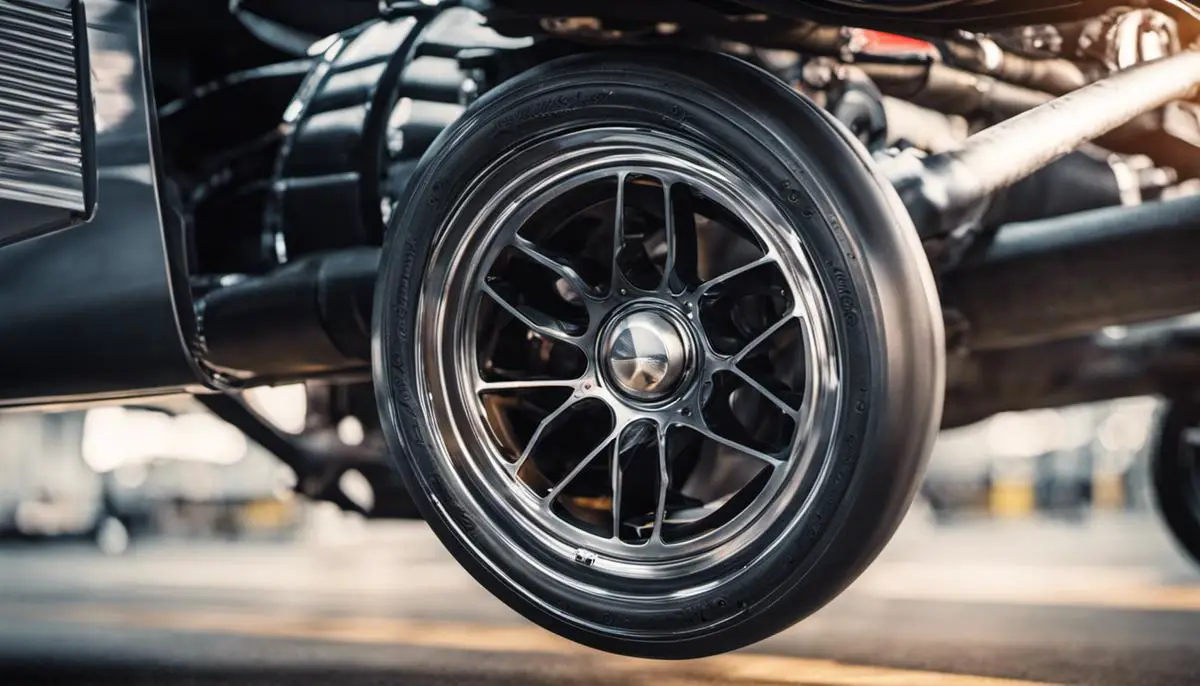Easy Fixes for Common Jeep Wrangler Issues

Last Updated on October 17, 2023 by Christ
Whether you’re an enthusiast or a layman, knowledge about your vehicle’s technical details immensely contributes to the way you handle and maintain it. Particularly with a powerful and rugged machine like the Jeep Wrangler, this insight proves to be even more beneficial. In this essay, we’ll delve into the basics of Wrangler’s structure and mechanics – exploring the engine, transmission, suspension, and electronics – the essential elements that commonly require repairs. Furthermore, a deep dive into typical Wrangler issues is made to identify their effective fixes, which include brake system repairs, radiator leaks, and electrical faults. Additionally, emphasis is given on maintenance and performance tips that ensure the vehicle’s longevity.
Contents
Understanding Jeep Wrangler Mechanics
The Essential Mechanical Know-How: Fixing Common Jeep Wrangler Faults
Enthusiast garage mechanics and off-road adventurers, pay heed! Knowledge of key mechanical facts can transform those pesky Jeep Wrangler malfunctions from daunting nightmares into manageable, even enjoyable, afternoon fixes. Let’s explore areas that necessitate keen understanding and ambitiously delve into the awe-inspiring world of DIY Jeep repairs.
- Engine Overheating
Foremost, engine overheating is a recurring issue among Jeep Wrangler owners – but fear not! This can be effectively diagnosed and addressed. Learn to examine the cooling system, including the radiator, coolant fluid level, and water pump, for signs of leakage or damage. Understanding how to replace broken fans or clean blocked radiator grills also proves invaluable.
- Exhaust Leaks
Get familiar with the exhaust system, especially the manifold. Be able to identify symptoms of an exhaust leak – louder engine noises, decreased power, and poor fuel efficiency, amongst others. Knowing how to identify and replace a cracked exhaust manifold or seal exhaust leaks will keep that Wrangler running smooth.
- Death Wobble
The infamous “Death Wobble” is genuinely terrifying but taking time to learn about your Jeep’s suspension components can be a lifesaver. Being able to diagnose and rectify issues relating to worn-out suspension parts or misalignment is vital. Learning how to validate the balance and alignment of tires, inspect track-bars for play and tighten control arm bolts proves beneficial in tackling this problem.
- Electrical Problems
Jeep Wranglers are sometimes prone to electrical problems. Understanding the function of fuses, relays, and wiring diagrams is key. Being able to troubleshoot ignition switch failures, window regulators, sensor malfunctions, or even just changing out faulty bulbs ensures your Wrangler stays lit.
- Transmission Trouble
Lastly, become familiar with the transmission system. Knowledge of how to check the automatic transmission fluid or change gearbox oil is worth its weight in gold. Be equipped to handle shifting problems by checking the clutch master cylinder, the syncros, or the transfer case.
Looking under the hood of your Jeep Wrangler may initially seem intimidating, but take heart — anyone with a drive for understanding and a good socket set can tackle these common issues. Whether preserving the adventure-ready, off-road brute or simply maintaining the daily drive, this caliber of confidence comes from comprehensive knowledge and hands-on experience, attained incrementally as you turn each nut and bolt.
So, to every DIY mechanic, it’s time to grab that toolbox, flip open the Jeep manual, and face the challenge head-on. Every bump, every hiccup – it’s all just another chance to prove a Jeep isn’t just something you drive, it’s something you conquer!

Common Wrangler Issues and Their Fixes
Understanding Driveline Vibrations: A No-Nonsense Guide to Addressing a Lesser-Known Auto Problem
Every productive hour spent under the hood of an automobile, tweaking its components, and schooling oneself in the intricate mechanics of car anatomy, reveals an enriching world full of knowledge and practical skills. Among the maze of auto-enigmas, the concept of driveline vibrations may appear rather obscure. However, anyone knee-deep in automotive hobbyism may intimately understand the silent anxiety that stems from unexpected driveline vibrations. This article targets that very overlooked trepidation.
Driveline vibrations, although not as conspicuous as an engine overheating or as dire as transmission trouble, possess an insidious knack of sneaking up on the unprepared auto enthusiast. These vibrations hint at problematic inconsistencies in parts that work together to transfer power from the engine to the wheels.
Let’s talk about identifying driveline vibrations. Quite often, vibrations start showing between 30-40 mph and typically increase with the vehicle’s speed. Unattended vibrations can contribute to anomalies like premature tire wear, leaks in the exhaust system, or even structural damage in prolonged neglect. This makes recognizing and addressing the problem imperative.
The root cause of driveline vibrations can be traced back to three potential areas. Firstly, the driveshaft angles might be misaligned. The driveshaft runs from the transmission to the differential at the vehicle’s rear, and ideally, its angles should be equal at both ends. If these angles are unequal, it creates driveline vibrations.
Next, the driveshaft balance could be off. Like a wheel needs to be balanced to avoid wobbling, the driveshaft needs balancing too. An indication of an unbalanced driveshaft is a vibration that increases proportionately with the vehicle’s speed.
Lastly, driveline vibrations can also stem from damaged or worn U-joints (aka Universal Joints). These flexible pivot points provide a necessary ‘bend’ in the connection between the driveshaft, transmission, and differential. U-joints, over time, are subject to wear and tear and may cause driveline vibrations if they aren’t in optimum health.
Addressing driveline vibrations can be as straightforward as replacing a U-joint or rebalancing the driveshaft. In extreme cases, driveshaft replacement may become necessary. Acid-testing the misalignment of the driveshaft angles may require professional help as it involves precise equipment and know-how.
The takeaway here is that ignoring driveline vibrations can subsequently expose your vehicle to more severe problems. As tireless automobile devotees, it is in our power and interest to address driveline vibrations with the same urgency as any other car problem. As it turns out, the car doesn’t just go ‘vroom’, it also whispers in mysterious vibrations, and the ones who heed those whispers are the true masters of this deserving hobby.

Maintenance and Performance Tips for Longevity
The Jeep Wrangler Maintenance Guide: Performance Enhancement and Longevity
Maintaining the performance and longevity of a Jeep Wrangler is a hobby that engages hands, hearts, and minds. There’s just something exhilarating about being part of the life cycle of a vehicle you love. For those who know the transformative impact of a well-maintained Jeep, here’s a guide to effectively keep that Wrangler in tiptop shape.
First things first: Regular oil changes. The Jeep Wrangler’s engine thrives on clean oil. Changing this vital lubricant as recommended – roughly every 3,000 miles or three months – is a surefire way to keep piston rings, cylinder bores, and other key engine components in optimal condition. Shorter intervals may be suitable for those living in harsh climates, or for those who tend to drive off-road frequently.
Equally significant is the state of a Wrangler’s brake system. It’s no secret that Jeep Wranglers excel at tackling challenging terrains. However, this adventurous spirit can tax a Jeep’s brakes. Regular inspections are essential to ensure there is adequate brake fluid, and to detect early signs of wear or damage to brake pads, rotors, or lines. Wrangler owners should replace components showing signs of excessive wear as quickly as possible.
Yet another crucial aspect is maintaining the bearings. The wheel and axle bearings of a Jeep Wrangler heavily influence the vehicle’s stability, ride quality, and fuel efficiency. It’s recommended to clean and repack these bearings with high-temperature grease at intervals consistent with the service manual – typically every 30,000 miles. Remember, the early detection of worn or failing bearings can prevent more serious damage and costly repairs down the line.
Last but not least, let’s delve into tire care. Tires are a Wrangler’s first line of defense against rough terrain, so they deserve special attention. Regular rotation (every 6,000 to 8,000 miles) ensures even wear, providing longer tire life and a smoother, safer ride. Tire pressure should also be checked routinely; not only does this practice maximize tire life, but it also optimizes fuel economy.
There are many moving parts to a Jeep Wrangler, and each has its own unique needs. Whether you’re traversing a grueling off-road trail or cruising down the highway, conscientious attention to maintenance can maximize both your Jeep Wrangler’s performance and lifespan. You’ll be rewarded with an adventurous companion that’s ready to push boundaries and exceed expectations for many years to come. Wrangler maintenance is not just about nuts and bolts – it’s about tuning into the heartbeat of a vehicle beloved by many. Enjoy the journey!

Armed with the information about the common issues and their fixes, along with useful maintenance and performance tips, you now have a comprehensive understanding enabling you to handle your Jeep Wrangler with more confidence and wisdom. Keeping a keen eye on symptom appearances, regular check-ups, and prompt attention to minor issues can go a long way in maintaining the vehicle’s top condition. A well-maintained Wrangler not only provides a better driving experience but also extends its lifespan. Remember, every car is as good as the care and attention given to it – the more knowledgeable and proactive you are, the longer your Jeep Wrangler stays robust and reliable, ready to take on journey after journey.
Leave a Reply